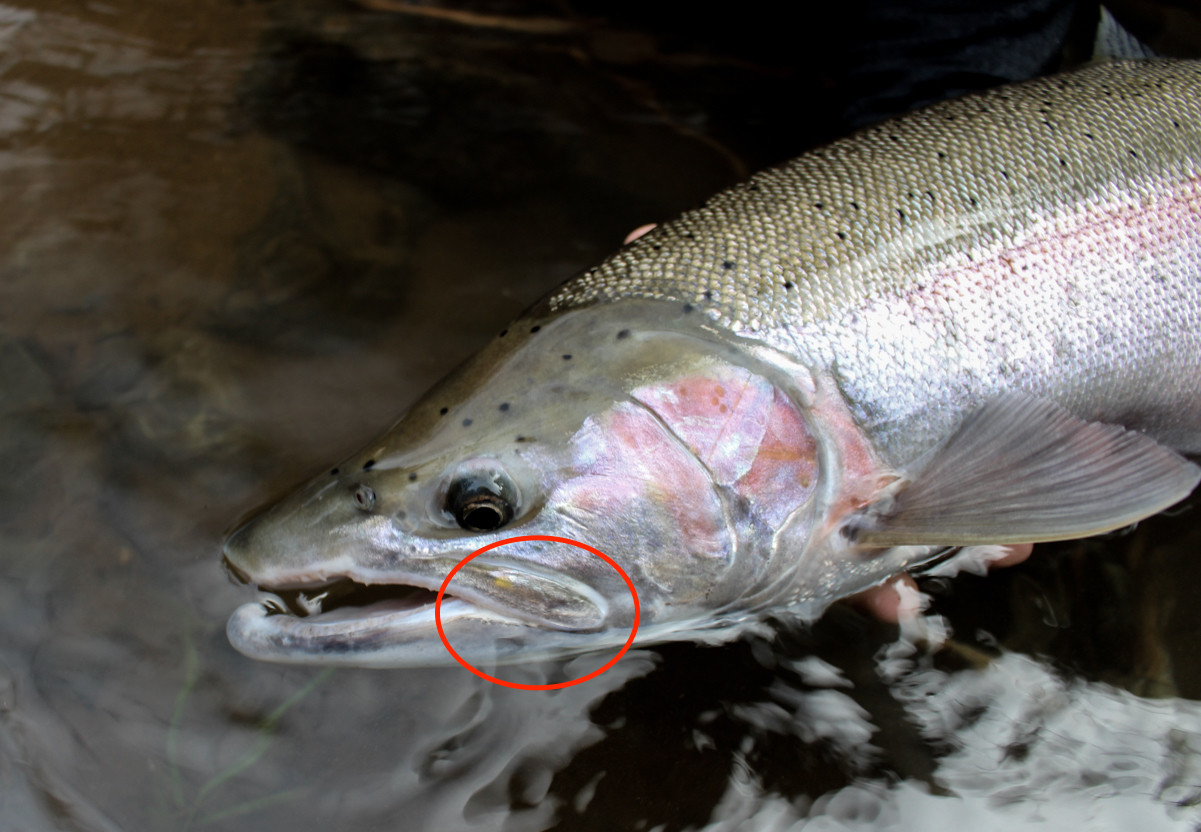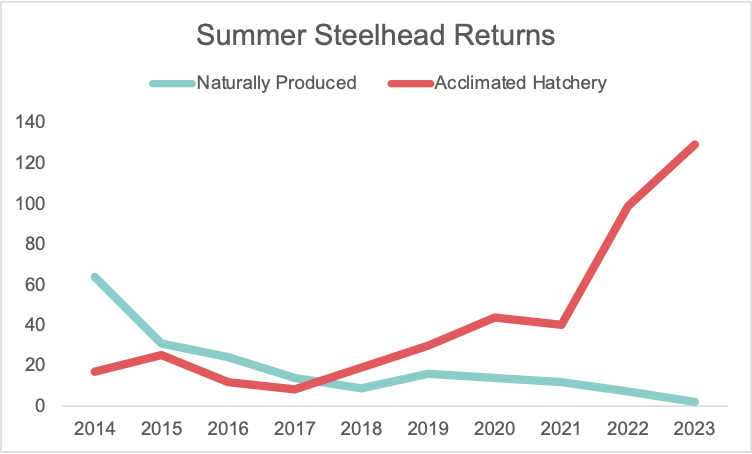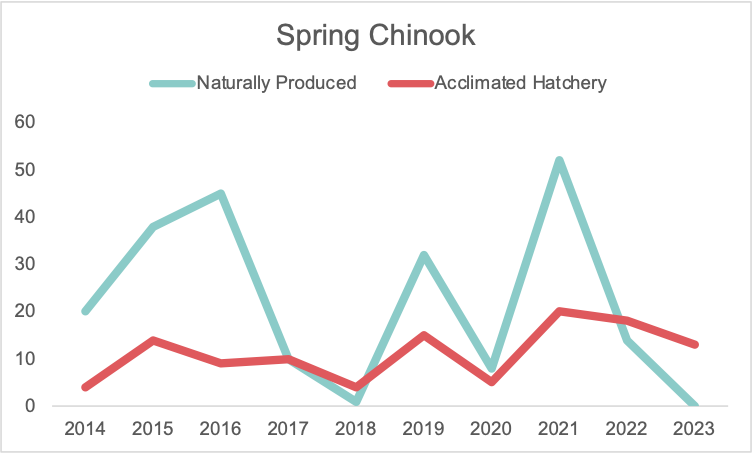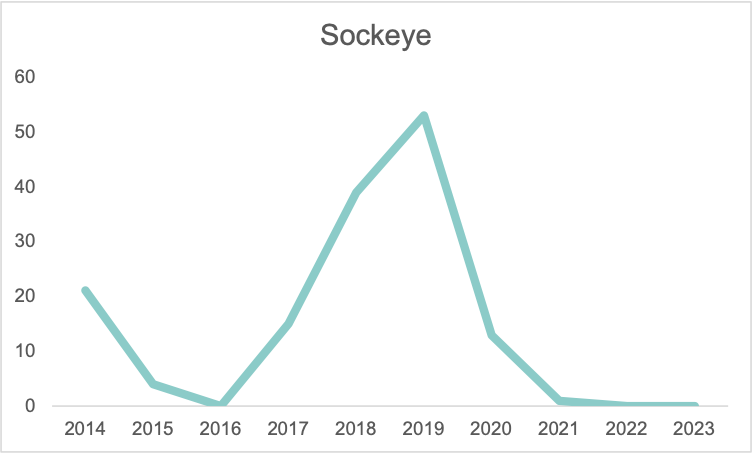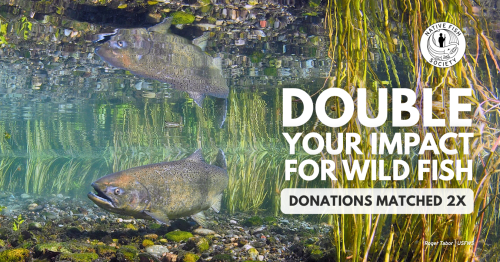How is Fish Reintroduction on the Deschutes Going?
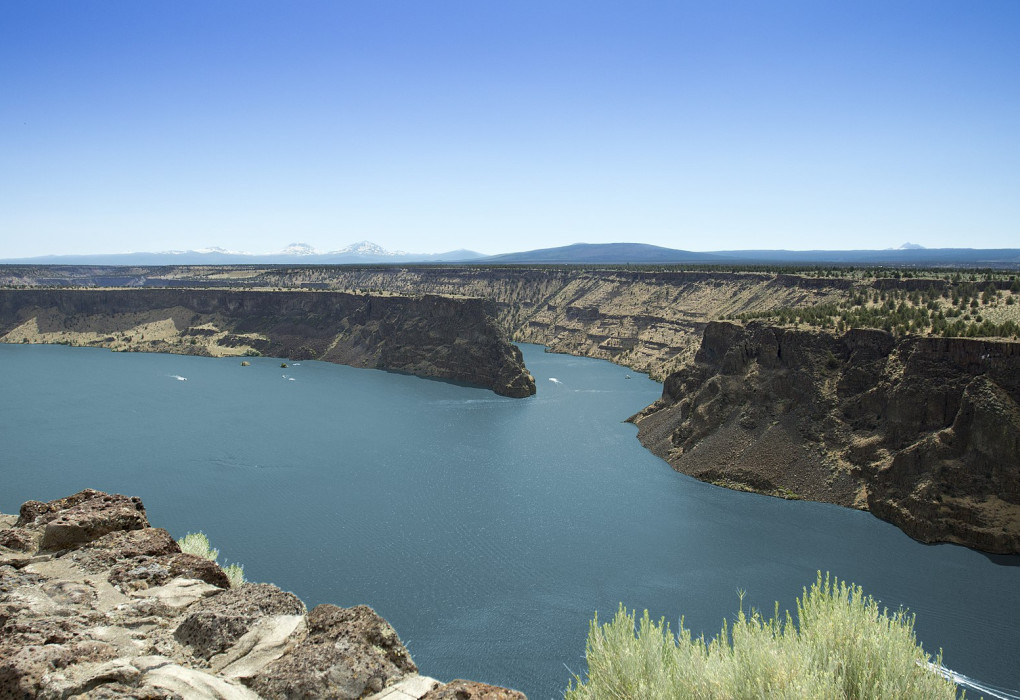 Reservoir Billy Chinook, formed by Round Butte Dam, is a major impediment to outmigrating smolts finding their way downriver. Creative Commons photo.
Reservoir Billy Chinook, formed by Round Butte Dam, is a major impediment to outmigrating smolts finding their way downriver. Creative Commons photo.
Last week, the Central Oregon Daily published a piece touting the success of the program reintroducing native salmon and steelhead above the Pelton Round Butte dam complex on the Deschutes. Because there is no volitional fish passage at the dams, this program is mandated to meet “fish passage” requirements at the dam complex. The goal of this program is to restore healthy populations of naturally reproducing summer steelhead, spring Chinook, and sockeye in the Crooked, upper Deschutes, and Metolius systems.
Unfortunately, and contrary to what the Central Oregon Daily reported, this program is not working.
The program started in 2010, and since then, 1.7 million salmon and steelhead smolts have been collected at Round Butte, trucked below the reregulating dam, and released into the lower Deschutes to continue their migration. That number may sound impressive, but it’s fewer than 130,800 smolts/year. For three species. And it’s even less impressive when you realize that close to 200,000 hatchery spring Chinook and summer steelhead smolts (combined) have been acclimated and released above the dams each year.
The number of returning adults has been just as depressing. To understand the counts, you first need to understand how fish in the Deschutes are marked: hatchery smolts acclimated above the project have their left maxillary (that’s the bony part of a fish’s upper jaw–check out the picture above for a visual) clipped off, naturally produced smolts moving through the fish trap have their right maxillary clipped. Hatchery fish released from Warm Springs or hatcheries outside the Deschutes have the adipose fin clip we tend to most associate with a hatchery fish. To find out if the reintroduction program is really working, it’s most important to examine the number of maxillary clipped fish adults that are returning, as those are the fish that originated from above the dams. Between 2014 and 2023, only 616 naturally produced and acclimated hatchery summer steelhead returned to the reregulating dam, only 332 spring Chinook, and a mere 146 sockeye. (Note: there are no acclimated hatchery sockeye smolts being introduced to the system.)
The reintroduction program is going so poorly in making progress toward the goal of establishing self-sustaining populations, that last year, the Fish Committee voted to pass excess hatchery broodstock above the dams. When I expressed concern about this plan, given the potential for increased disease transmission and introgression with the wild redbands, I was told that this was a necessary step if the reintroduction program was to have any chance of success.
But this is a program that had little to no chance of success from the start. Two-way trap and haul programs don’t work.
So what’s the solution? For now, habitat restoration in key lower river tributaries to help maintain the wild runs that currently persist in the lower basin. But the long-term goal has to be removing the Pelton Round Butte dams. It is the only way anadromous fish will have a future in the Deschutes basin.
